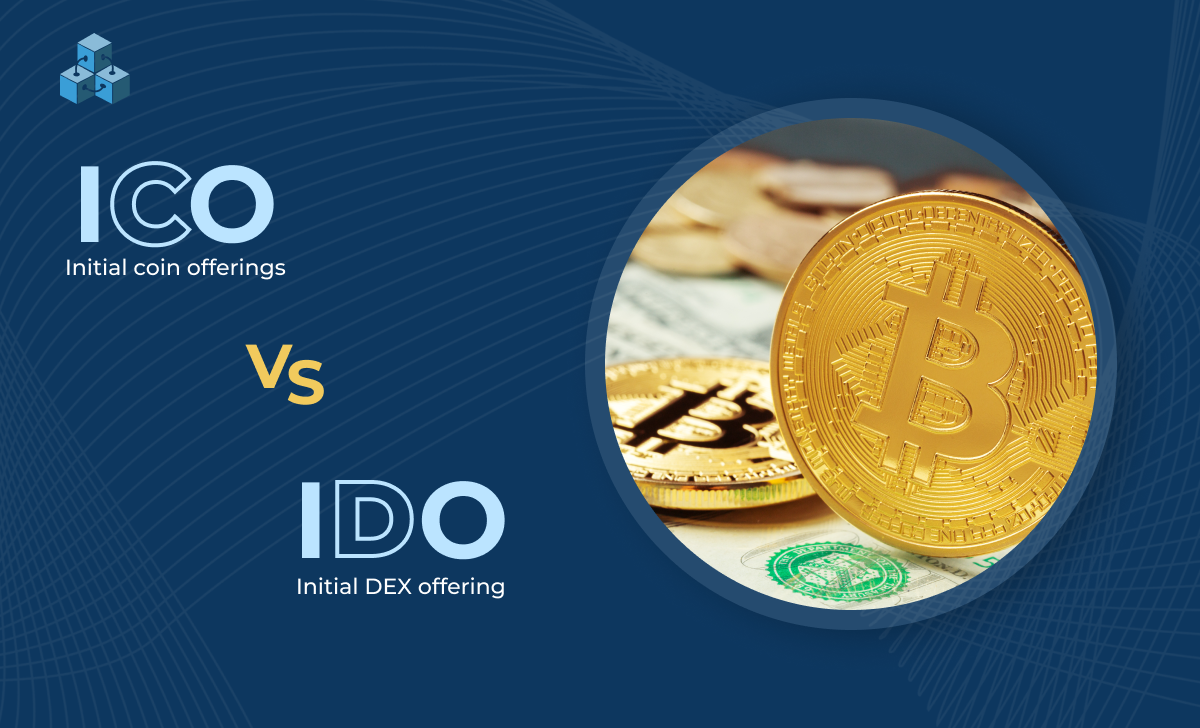In this digital world, cryptocurrencies have brought a revolution around. Cryptocurrencies are transforming the way for funding projects significantly. Initial Coin Offerings (ICOs) and Initial DEX Offerings (IDOs) have emerged as the two prominent methods to gain significant attention as a revolution in the crypto ecosystem. ICO and IDOs are fundraising methods that enable projects to secure the essential capital for their development and launch initiatives. In this blog, we will explore the difference between both fundraising methods, their advantages and challenges. Let us shed light on the path of these projects that can help achieve their fundraising goals.
Understanding ICOs and IDOs
Initial Coin Offering (ICO): Initial Coin Offering, short for ICO, is a fundraising strategy that involves a project or company creating and distributing its own digital currency or token to investors in exchange for financial support as funds, usually cryptocurrencies, such as Bitcoin or Ethereum. These tokens are generally generated on the blockchain platform, such as Ethereum. These carry the ability to define different functionalities within the project’s ecosystem. When participating in ICOs, investors usually use established known cryptocurrencies such as Bitcoin and Ethereum to buy these tokens. The purchased tokens represent the ownership or utility of the project ecosystem. These tokens are sold at a predetermined period at a fixed price.
Initial DEX Offering (IDO): An Initial DEX Offering (IDO) is a mechanism of raising funds for a project that occurs on decentralized exchanges (DEXs). ICOs involve a centralized platform, whereas IDOs are conducted directly on decentralized platforms, enabling schemes to list their tokens on the decentralized exchange. Users can then purchase them with the native token of the DEX. IDO offers tokens to investors via a decentralized exchange, which promotes accessibility and inclusivity. IDO projects usually involve liquidity pools and incentivize early participants.
ICO vs. IDO: Key Differences:
- Decentralization: Initial Coin Offerings usually receive criticism for being centralized with a preference to favor well-connected investors. IDOs, on the other hand, utilize decentralized DEXs that enable greater involvement and participation from the cryptocurrency community.
- Token Listing: In ICOs, projects require creating tokens to exchange them for cryptocurrencies before the fundraising project. Whereas IDOs allow projects to list them directly on decentralized exchanges (DEXs). Thus, IDOs provide faster access to trading platforms.
- Regulatory Considerations: ICOs may face regulatory challenges due to their classification as securities. Although IDOs are not immune to regulatory challenges, they can still take advantage of the decentralized nature of DEXs.
- Liquidity Pools: IDOs include liquidity pools, where users offer liquidity and, in return, receive tokens. The token distribution process is based on contributions instead of a fixed sale, which helps create an element of fairness.
- Community Engagement: IDO offers strong community engagement as the users are more likely to be active on the DEX platform. It helps create a decentralized loyal user base.
Advantages of ICOs
- Simple: ICOs are familiar to many investors and are simple to use. It involves the purchase of the tokens with established cryptocurrencies, such as Bitcoin or Ethereum.
- Visibility: ICOs have been prominent in the cryptocurrency ecosystem, which helps attract a diverse range of investors.
- Fixed Price Sale: The tokens are offered at a fixed price as decided, which makes it easier for investors to calculate their investments.
Advantages of IDOs
- Decentralization: IDOs use decentralized exchanges (DEXs) that enable broad expansion, transparency, and inclusivity while removing intermediates.
- Liquidity Pools and Fair Distribution: IDOs ensure a fair token distribution among participants via liquidity pool participation. It reduces the risk of a token being held in the hands of a few through reduction measures.
- Community Building: IDO platform participation promotes community engagement and loyalty, as those who participate are usually active users of the DEX platform.
Choosing the Right Path
Choosing between ICOs and IDOs requires thorough thinking regarding the project objectives approach to engage with the community and target audience. ICOs provide simplicity and broad visibility, while IDOs offer a decentralized exchange platform and inclusive approach to fundraising. Decentralized exchanges are becoming popular, and the transforming crypto landscape makes IDOs an attractive option for projects that demand community-driven growth.
Conclusion
ICOs and IDOs are two distinctive paths for fundraising methods in the cryptocurrency ecosystem. While ICOs are simple and familiar, IDOs are decentralized as DEX and offer opportunities for broad community participation. The choice lies with the user aligning with project values, goals, and engagement strategy. Ensure a successful fundraising journey by selecting the one suitable for the project.
Blockcoders is an ICO development as well as IDO development company. Hire our team to build yourself the desired platform for your project. Connect with us!
 info@blockcoders.pro
info@blockcoders.pro
 Our global presence :
Our global presence :
 |
|
 |
|
 |
|


